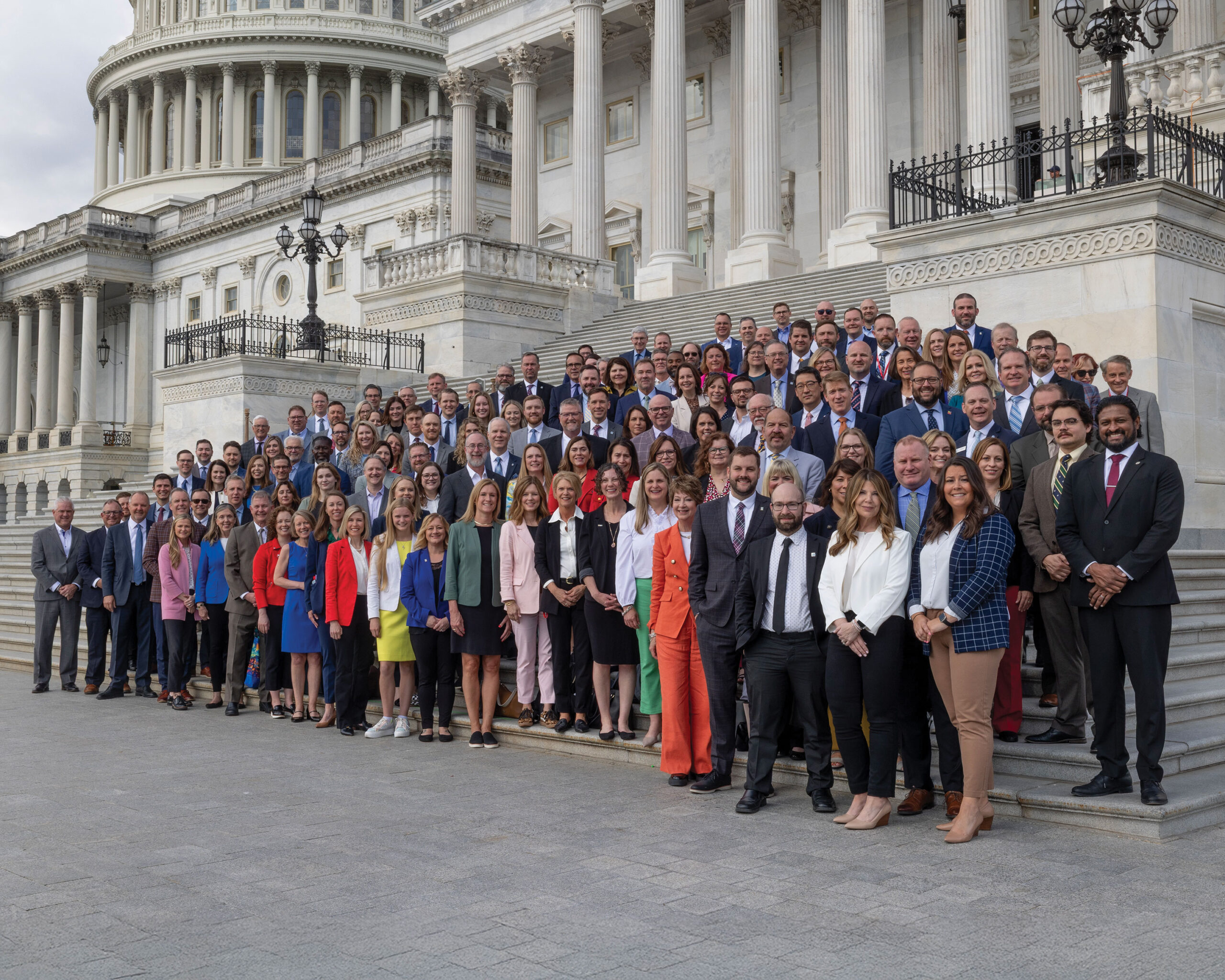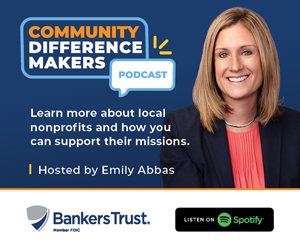Part two: Bits and bites from DMDC 2025

Editor’s note: This is part two of our DMDC coverage. Read part one
On the Greater Des Moines Partnership’s DMDC trip to Washington, D.C., in early May, I had the chance to meet some of the more than 160 attendees, including 10 who I interviewed about one current focus for their organization.
Here’s what I learned.
Responses have been lightly edited for clarity and length.
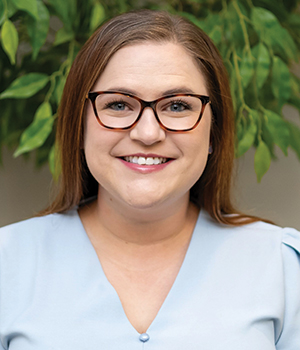
Kaity Patchett, executive director, Capital Crossroads, Four years on the trip
What is one project or issue your organization is focused on?
A project that we just recently launched that was a year in the making and we’re in the process of launching the second phase of, is our Workforce Development Ecosystem Map for Central Iowa. We launched that in March. Essentially, that was a community-identified need to help workforce development professionals have a better understanding of all the different supports and programs that existed in Central Iowa because it’s hard to have strategic conversations about where we need to be doing better or more or identifying opportunities to collaborate if you don’t actually have a good understanding of the system itself.
We created a new interactive tool, a visual representation of the workforce development organizations, initiatives and resources in Polk, Dallas and Warren counties. That map is housed on the Greater Des Moines Partnership’s website. More than 150 different stakeholders across sectors were involved in conversations to inform that map. The map itself represents more than 190 different organizations across that three-county footprint. We’re already starting to see referrals come into Capital Crossroads, where folks are saying, ‘Hey, we use this map, we’d like to talk to you more,’ or ‘What do you think about this?’ or ‘Can you help connect me with this resource?’ So in terms of creating a community resource that’s actually being utilized, we feel strongly that that’s going well thus far, and we know the map is never going to be finished. It’s always going to be an ongoing collaborative effort with community input, so there’s a mechanism for folks to suggest edits and make additions so it will continue to grow and improve in order to remain useful to workforce development professionals.
For our next steps, we’re also starting to look at potentially mapping out work-based learning and career exploration programs that Central Iowa businesses are offering. We’re excited about that because the overall goal is to help connect education and industry in order to streamline some processes, improve communication, make sure that they have a shared understanding of each other’s needs and how to best connect in order to provide both students and adults with opportunities to learn and grow in their career.
We’re also going to be taking a look at some of the feedback that businesses have been giving.
Iowa Workforce Development, the Iowa Business Council and the Greater Des Moines Partnership have all done surveys recently about work-based learning and talent that indicate that employers are prioritizing the development of human skills for emerging talent — folks who are just coming into the workforce — and so we want to dig into that a little bit more, too. From our perspective as a regional multi-sector collaboration, what can we add to that conversation? If we know that that’s something that employers are concerned about in terms of emerging talent, what can we do to address it? Where are the gaps and where are there opportunities for collaboration in order to positively impact that?
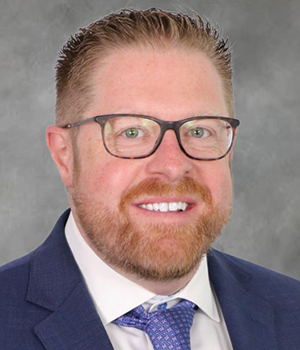
Ryan Moffatt, community and economic development director, city of West Des Moines, First year on the trip
What is one project or issue your organization is focused on?
The redevelopment of Valley West Mall will certainly be front and center for us. We’re increasingly a maturing community, and while it’s nice to always take a look at all the exciting things on the fringe of the community, we don’t want to end up with a big donut hole in the middle either. So we’ve got a lot of eyes and a lot of future intended investment in the middle of the city. The mall is on about 60 acres, and I think that every time I brought a real estate developer there to look at the property, they would all say that it’s still a good piece of real estate for all purposes, it’s pretty centrally located in the metro. It’s got transit access, it’s obviously right off of I-235. They did what’s called a call for offers on March 31 of this year, so anyone that was going to make a purchase offer on the property, that was done. We’re waiting to hear back from the court appointed receiver, so that’s the waiting game that we’re in right now.
The next step would be to identify who it is that they actually want to sell the property to, and then we think that they’re going to allow about 120 to 180 days of due diligence for that developer to come in and get the zoning correct, come and negotiate a development agreement with the city. When we know who the owner is, maybe by late summer, early fall, we’ll have a lot better feel for just exactly what their ideas are for the property. I’ve met with some of the people that I know have put bids in for it, and I think some of them would do justice to what we would like to see happen. What we’d like to see basically is either partial or whole demolition of the mall property, and really just kind of start over with a mixed-use development. Our thought would be to create a centralized green space that’s a good amenity for people to congregate in and then build activity around it. So, restaurants, bars, things like that that could flank it. Think of a place that maybe it’s got festival lights and fire pits and a stage or screen or something that people would want to hang out in and then just build around.
We need to get rooftops there as well so I think that fairly dense residential housing is a component of it. It won’t have as much retail as what is there today. We’re over-retailed in this metro as it is, so would retail still be a component? Yes, but I also think there’s a good play for “eatertainment.” When you talk about Putts & Pins and Smash Park and Spare Time, businesses like that, obviously, are still all the rage all over the country. I don’t want to use a cliche town center-type concept when we’ve got Valley Junction as our historic downtown, we’ve got Jordan Creek Town Center. It’s not going to outdo Jordan Creek. But do I think it’d still be a center of activity in the future? Absolutely.
It’s not just the mall itself, it’s the areas around it. We’ve got offices that have started to vacate that are reeling a little bit, so we’re paying attention to that as well, and whether it’s reinvesting in the offices that are there to make it relevant to what the market’s looking for so the buildings don’t become obsolete. Whether it’s potentially repurposing some of these buildings, or if some of them can’t be repurposed or there’s no market to reinvest in it for office needs long term they might be scrape jobs to where you need to redevelop the site entirely.
What other areas or developments are a priority?
Another priority certainly is the whole Grand Avenue corridor west of I-35. We’re moving forward with the RecPlex expansion. I think we’re still settling on whether it’s a $30 million or $40 million addition and the deciding factor there is whether we put 2,500 seats and a third sheet of ice or 3,500 seats. But that will get built, and I think we’re really gunning hard to have that completed by the end of 2026.
In conjunction with that, we’ve got the Grand Experience, the water park, conference center and hotel. There’s a lot of pent-up demand for commercial space along that corridor already with the RecPlex, DMACC and DMU already along there. Big increase in traffic. If you drive that corridor now, you’ll notice there’s a lot of infrastructure work going on, so we’re actually widening Grand Avenue from I-35 to 60th Street, and then we’ll take that down to Jordan Creek Parkway after that and that’ll basically be a six-lane roadway when it’s fully built out. There’ll be more stop lights there and everything for better traffic management. In terms of the water park, a lot of work left to do. I think the best case would be a groundbreaking in 2027 because there’s still design work and some of the development review stuff that needs to happen. But the developer, in addition to the water park, would also intend to develop multi-family and other commercial. He might not develop the commercial himself. He might just sell it. That’s the kind of thing, I think in the next couple years, you’d probably see come out of the ground first on that corridor. What it would be I don’t know yet. Could it be a brewery? Could it be a restaurant, more office, medical? A lot of things. That’s speculative commercial. But I think for us, that Grand Avenue corridor probably has the potential to be the highest growth corridor for us commercially in the next couple of years.
We have a lot of infrastructure work underway. We’re building EP True Parkway out to Grand Prairie, and that would be to help serve the third Waukee High School someday that would be on the West Des Moines side. While that school’s probably a ways down the road still — it’s going to be contingent on how much population growth we see in that area — we at least wanted to lay the groundwork for the infrastructure to help open that area up and give it a good site to build from someday.
Is there anything else you would highlight?
The other thing we oversee for the city is our housing efforts, so we always have housing programs, not just for construction of new, affordable housing, but also rehab of existing in the older areas of our community like Valley Junction and maybe some of the near-end areas close to Valley Junction. Those are areas where we have programs from radon mitigation to exterior home rehab. That’s something we keep an eye on as well. When I talk about West Des Moines maturing, Valley Junction dates back to the 1890s, and we’ve got a lot of the city now that was built in the ’40s, ’50s and ’60s, and it’s starting to hit an age now where it needs reinvestment to keep it healthy.
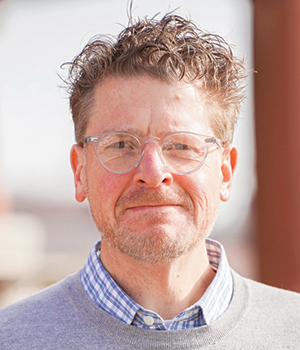
Joe Benesh, president and CEO, the Ingenuity Co., Eight years on the trip
What is one project or issue your organization is focused on?
My business does strategic planning for nonprofits and a lot of economic development work, and the shifts in the economic environment and uncertainty around grants and availability of federal funds. Things coming in, things going out in terms of resources. It’s very volatile. This actually reminds me a little bit of COVID in terms of the shift in the dynamics, the macro environment, so that it’s like, we’re addressing different things. On any given day in a normal environment, I’m working on a lot of strategies that have to do with general operating or organizational design. Now it has become a lot of diversification of revenue, or supplementing income streams or replacement income streams or even contemplating how much goods are going to cost based on what route they take in order to get into our sphere, so it’s a lot of operational strategic planning, but it’s different in the sense that it feels like it’s responsive to the changes that are happening at a very rapid pace.
Can you provide an example of how nonprofit operations may be affected by the current uncertainty?
A lot of the bigger nonprofits I work with have always benefited from consistent federal funding or there’s a certain amount of money that comes in from Bravo or from another granting organization. But now it’s less clear in terms how much I’m going to get from this organization or that organization. So if we shifted from major donors who were giving us $1 million, and we had to go to someone who is giving us a hundred dollars a month, what is the replacement in terms of an analysis to create a strategy in order to recapture and retain that in a sustainable way? I’m trying to make the math work on all that, because if it’s this much here, and I have to replace that much of it there, then it becomes like we’re playing Legos a little bit to try to make something whole. It’s much more difficult because the available amount of resources and the people who are willing to give based on an economic downturn shifts very quickly.
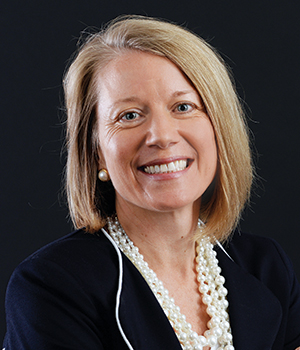
Jackie Norris, board chair, Des Moines Public Schools, and president and owner, Horizon Group, Two years on the trip
What is one project or issue your organization is focused on?
This is the second time Dr. Ian Roberts, superintendent of DMPS and I have come on this trip and one of the things that has been really helpful to us is to be able to talk to our legislators, but also talk to a lot of the people that are coming about potential partnerships because education is a throughline to a career pathway, and that is really the essence of how DMPS is trying to shift. There are pathways for college, but there’s also pathways through certificates, apprenticeships, accreditation. We can’t do that without a lot of the companies and organizations that come to something like this. In a group like this, a regional chamber of commerce, actually really helps to be able to vision that a little bit. Reimagining education is our vision, not just for buildings. It’s more than just buildings, it’s programs like AI and science education. It’s those types of small things that are going to be our future career pathways.
We also are hoping to better understand how all of the cuts are going to come to Des Moines Public Schools. We receive $70 million from the federal government so the more we understand any state impacts — that sets the budget. In a lot of chaos for public schools and for our superintendent, at least being able to anticipate the issues that are going to come your way I think has been really helpful. And I think as a board it’s helpful for the board to empathize and understand what’s going to be difficult. Talking about tariffs, I mean, people would say, ‘Well, tariffs don’t impact schools.’ Of course they do, because they impact the goods that are coming, and if we’re trying to do school construction it just got more expensive so it just gives you a broader perspective.
What is the role of the DMPS board in the Reimagining Education initiative?
I would say that the board cast the big vision. The big vision for us was far broader than just saying every kid’s going to go to college. Every student is going to graduate with a pathway, whether it’s a career pathway to a great job through certificates or apprenticeships, or it’s a life of service — public service, military service, AmeriCorps service, national service — or a college. It could be a two-year degree, it could be a four-year degree. I think that big vision that was cast, it’s really up to the superintendent to lay out how to do it. Of course, the board has a lot of thoughts on that, especially if it means going into our community and asking for funding, which is something that we’re actively considering, because we don’t have a lot of cash reserves to renovate buildings or change into a science academy.
Those things require funds. A big part of the conversation that we’re having right now is the superintendent’s committee is laying out a big vision and then, in partnership with the board talking about, ‘Well, what do we think we can get done and by when?’ because it’s both a big vision, and then you need some short-term wins to demonstrate progress to goal.
What is your main focus at Horizon Group right now?
Owning a small business is really hard. I give so much credit to small business owners in a way that I don’t think I ever understood. I’m so proud to employ women and be able to provide an amazing work environment with workplace flexibility and benefits, and all the things that everybody should have in a workplace, and yet, it’s really hard to turn a profit. I think that’s my biggest takeaway. Another one is because a lot of what I do is planning, it’s very hard for any organization right now to plan beyond a couple of years, and so trying to change the mindset of boards that a strategic plan for 10 years out. You can’t. You can have a North Star and then every year you’re trying to assess because funding, new laws, there’s just so many influences.
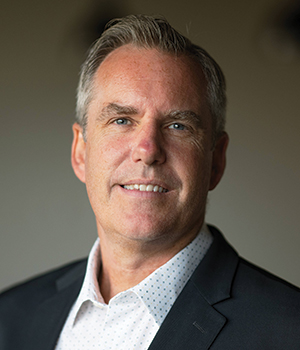
Vince Ward, business development director, the Weitz Co., Seven years on the trip
What is one project or issue your organization is focused on?
I can reference the Des Moines Airport project. In the past, obviously, that was a huge effort that we had been involved with for a great deal of time and worked with specifically with the airport to try and help make that project a reality. Currently, we’re deeply engaged in the data center market here in the Iowa area, working both here in Des Moines and in Cedar Rapids on confidential data center clients and also the QTS project in Cedar Rapids.
What opportunities has the blooming data center market created for Weitz?
We’ve built an entire business unit specific for building those projects given the scale and complexity of those. We’ve not only leveraged four projects here in Iowa, but also nationally, and even internationally. We’ve done projects as far away as Mexico building data centers and we really just don’t see any slowing of that market.
Are there any broader goals as you look a little further into the future?
The biggest thing that we’re facing particularly right now in those markets is infrastructure issues related to power availability and water availability for powering the data centers and providing the redundancy that they require. Also the water component is affected specifically by the cooling needs of these facilities and enhancements around AI only amplify that need.

Sarah Diehn
Sarah Diehn is editor at Business Record. She covers innovation and entrepreneurship, manufacturing, insurance, and energy.

